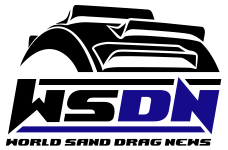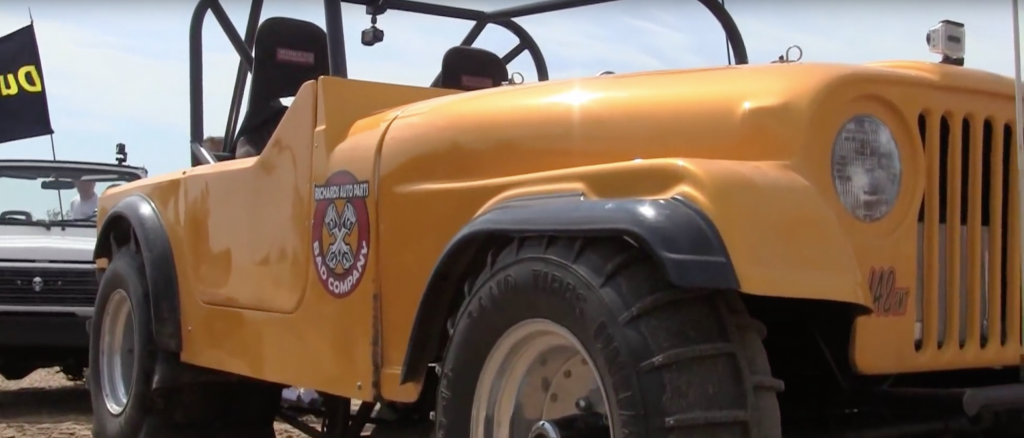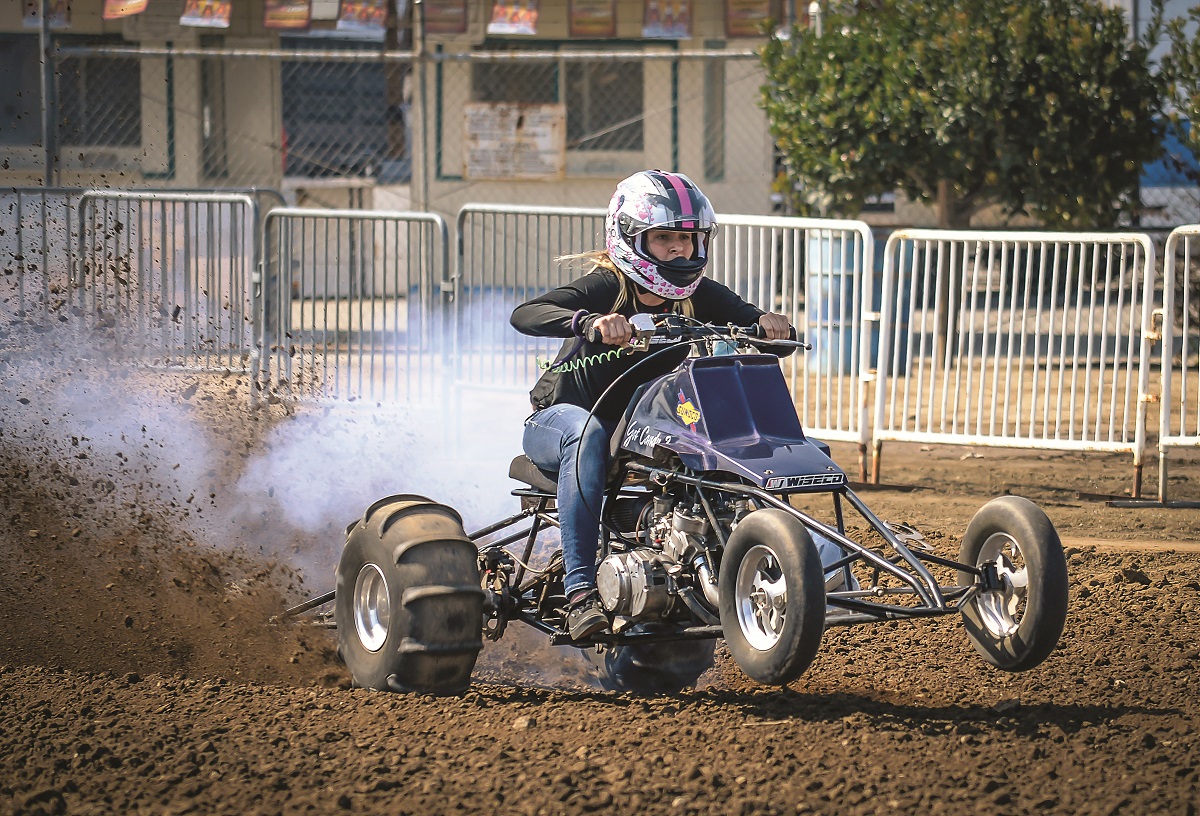
Original Post: Dirt Wheels Magazine
In recent issues Dirt Wheels has tantalized readers with race reports and photos about the exciting sport of ATV sand drag track racing—sanctioned drag races on a professionally groomed 300-foot track complete with NHRA-type drag race timing lights. Now you’re thinking about modifying your ATV into a more serious contender on the track and increasing your fun potential. Depending on the size of your wallet and what class of competition your passion for sand drag racing has you aiming towards, putting together a proper racer can range from a simple convertible conversion of your existing ATV, a full conversion dedicated to track racing or building a completely custom racer. These might also be “phases” as your racing expertise and budget evolve. We will keep it simple and give you the need-to-know of making your quad into a drag racer that you can easily turn back into a machine for trail riding.

CONVERTIBLE
If you want to race your ATV on the drag track but also want to continue to ride it on trails or dunes, this is your best option. Elapsed times on the track for bikes in the Convertible category are usually 5-plus seconds. Modifications racers do here include:
1.) Adding a “kill switch” you can teether to yourself (all tracks require this).
2.) If your motor is carbureted, have your carb bored out and re-jetted for higher performance. Changing it to a Lectron carb is another solid route.
3.) Replace your stock exhaust with a high-performance system. Get rid of your bulky stock airbox and filter. Installing a lighter and higher-velocity air-intake system and air filter improves your motor’s breathing.
4.) Add proper tires to your ride. SLS (Superlites) Skat Trak sand drag paddle tires with nine or more paddles on lightweight rims is a great setup to have.
5.) Switch sides of your rear tires/ wheels without turning them around. Depending on your wheel-rim offset, this should center your tires a few inches inward under the seat, adding more traction.
6.) Re-gearing. Changing sprockets to transmit your engine’s torque to your drag tires is a big plus. Depending on the type of riding you’ve been doing, you’ll probably find you need to change gearing to drive the larger paddle tires. Tip: start by experimenting with rear sprockets—adding teeth equals lower gearing. If you change your front sprocket, dropping a tooth is like adding three teeth to the rear sprocket and vice versa. Type “ATV Gearing Chart” into your computer to get some assistance.
7.) Add a wheelie bar to your ATV and replace the shock absorbers. To assure confident launches at the starting line and increase speed and safe handling down the track, you need to add a wheelie bar to your ATV and replace your shock absorbers with suspension lowering struts. You can change these components out easily if you want to convert back for a day of trail riding or duning.
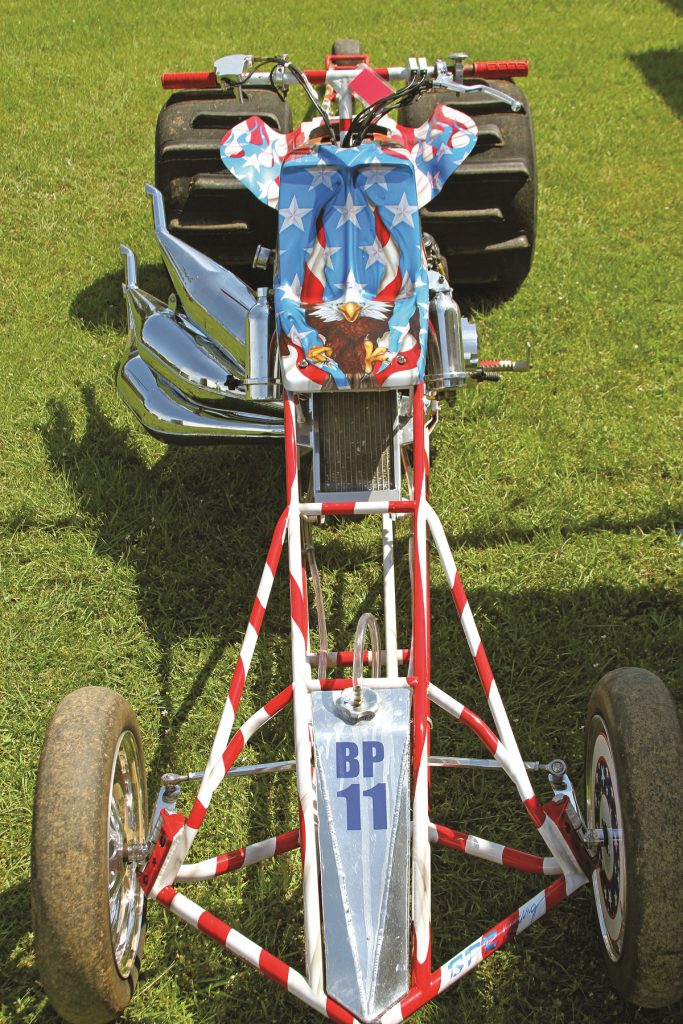
Custom builds are popular in the sand drag racing scene. Light weight and massive power are two of the most important factors for a winning drag machine. 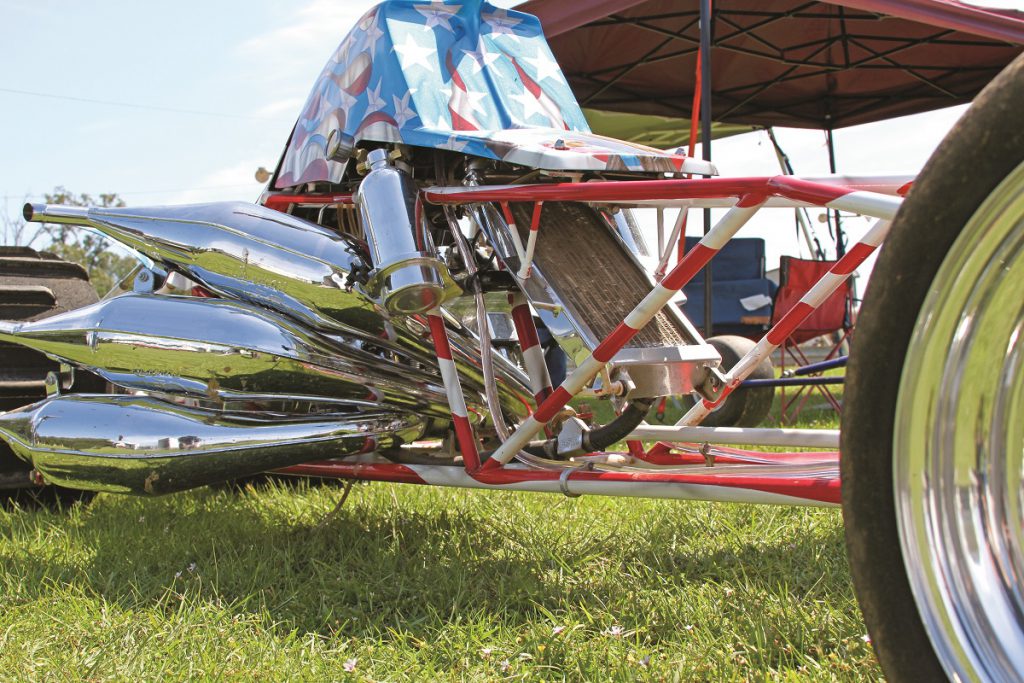
The power of a snowmobile motor in a custom-made drag frame can make it a very competitive sand drag bike. 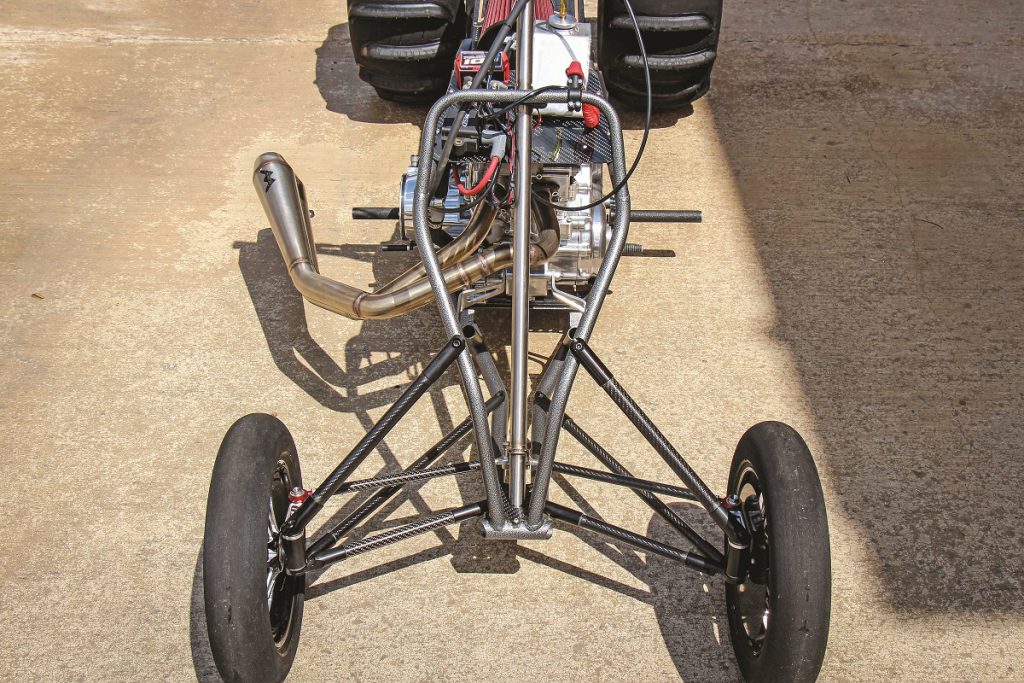
Technological advances always find their way into racing. Here on this custom Raptor, carbon fiber A-arms have been built into the stock frame. 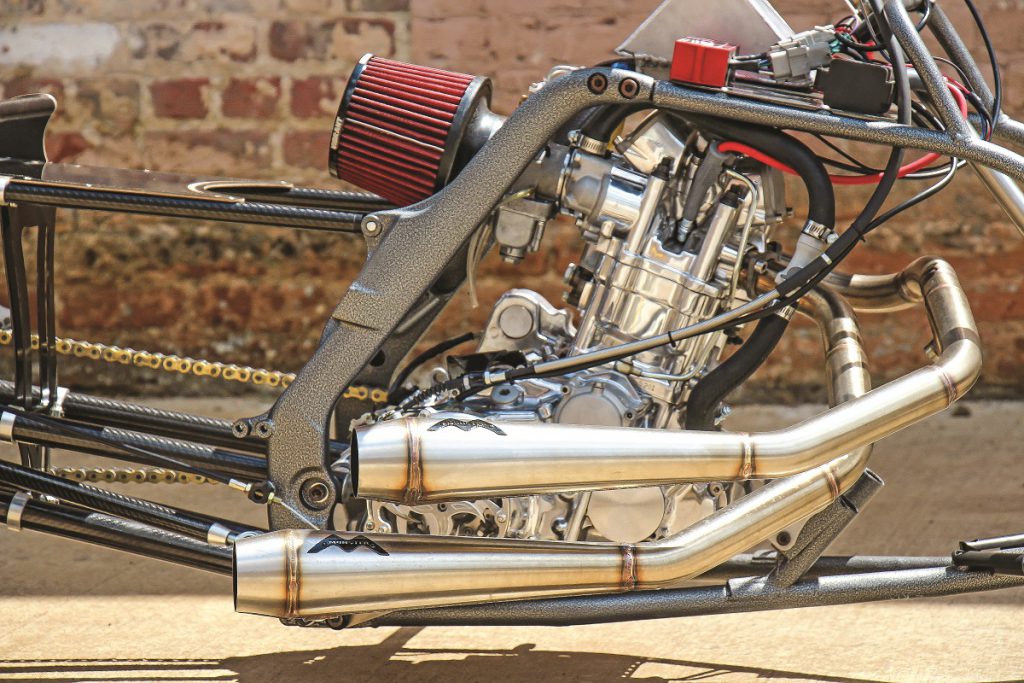
A high-flow exhaust system is a must once you start building a motor for drag racing. This system keeps horsepower up and weight down. 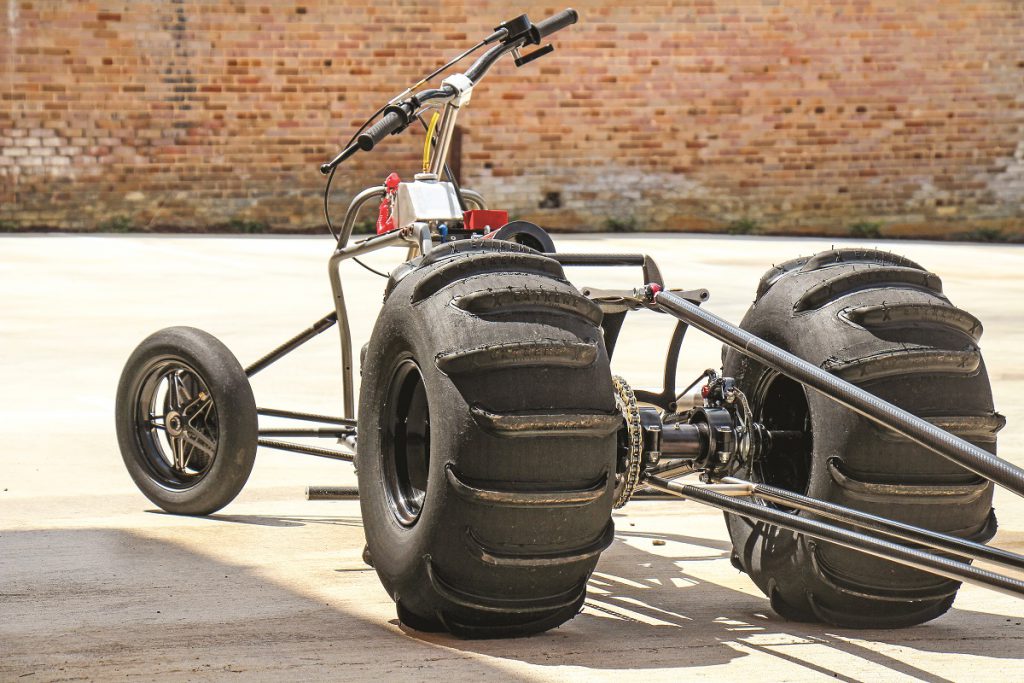
A set of good paddle tires can be the difference from winning or losing a drag race, and installing a shorter rear axle will help give the bike more traction down the straights.
FULL CONVERSION
Having raced your bike with convertible modifications, now you want your bike to go faster and become a real challenger in your class. This is where your ATV becomes a track-only machine. Conversions are a solid class in drag racing, with typical elapsed times running from around 3.9 to 4.9 seconds depending on setup modifications and engine size. Put your bike on a diet. While the industry saying that every 10 pounds of weight lost equals one horsepower gained may not be exactly accurate, lightening your bike will let it go fast er. Modifications to consider or put on your wish list:
1.) Get rid of lights, unnecessary electrical and plastics, grab bar, heel guards, front brake calipers and controls, heavy stock handlebars.
2.) Trade out stock footpegs for aluminums.
3.) Replace that heavy swingarm and axle with a lighter-weight, custom-made chromoly or titanium arm suitable for drag racing.
4.) Switch your stock axle for a JJ&A drilled drag axle that not only weighs less, but puts your tires closer together under the seat, where your body weight can help them gain important traction. 5.) Replace stock A-arms and front hubs with a lightweight A-arm setup; racing spindle-mount wheels; and bead-to-bead-smooth, buffed, skinny front tires (source: Direct Drive CNC). Depending on which bike brand you ride, you’ve just dropped your bike’s weight at least 68 pounds by making these changes. Many racers also replace their bike’s stock subframe with a lightweight custom setup and look for places they can use lightweight titanium, like the upper arms on your wheelie bar. This is also the time to install a lock-out clutch system prohibiting any clutch slippage while racing. You should also consider swapping your in-frame exhaust system for an out-of-frame pipe system to pick up an extra few horsepower from your new motor.
NEW MOTOR
You read that correctly. This is the time to complete an engine build and have your cylinder head custom-ported for drag racing, with larger titanium valves and custom-race cams. You will be running race fuel from now on. While your engine is apart, it is also the time for your engine builder to install an override tranny. Overrides can cut up to several tenths of a second from your elapsed times on the track by allowing you to speed shift through your gears during a race without touching the clutch. Note: you cannot go duning or trail riding without destroying an override tranny!
Determining which engine size build and mods to do largely depends on what class you want to race. Many races classify their racers by engine cc and/or fuel used (specific gravity of race fuel, nitrous, etc.). You might want to discuss your racing goals with an engine builder who knows drag racing.
The best way to find a reputable builder may just be at the track—talk to your competitors and friends about their motor build. Is their build reliable and delivering the performance they want? Does their builder know his business and back up his work? These are important questions to ask.
If you’re bent on doing your own build, use the most race-tested parts and reputable companies available. You can find many of them right here in the pages of Dirt Wheels, or check the Internet and Facebook sand drag racing sites like ATVDragRacer.com or the Pro Sand Drags Association, and contact racers like me on our Facebook pages.
CUSTOM
Your imagination is the only limitation. Although you’ll find bracket racers in this category, most racers piloting custom rigs don’t race for trophies. They are into heads-up racing, speed and the fastest elapsed time in their class. Elapsed times of less than 4.2 seconds are common, with 3.6 to 3.1 seconds frequently. A few have broken the 3.0 barrier and run under 3 seconds!
The basic formula is a big-bore single (usually starting with a Yamaha Raptor, YFZ or Honda motor); twin- (Yamaha Banshee), triple- or four-cylinder two- or four-stroke motor; motorcycle or snowmobile engine, frequently turbo- or nitrous-fed and fitted into a custom-made long frame with aggressive, staggered paddle tires and a strong wheelie bar. Engine sizes can run over 1300cc. It’s common to see 100-plus horsepower. Unless you have excellent professional mechanical skills and a complete machine shop, you will want to work with an engine and chassis builder if you want to enter this league.
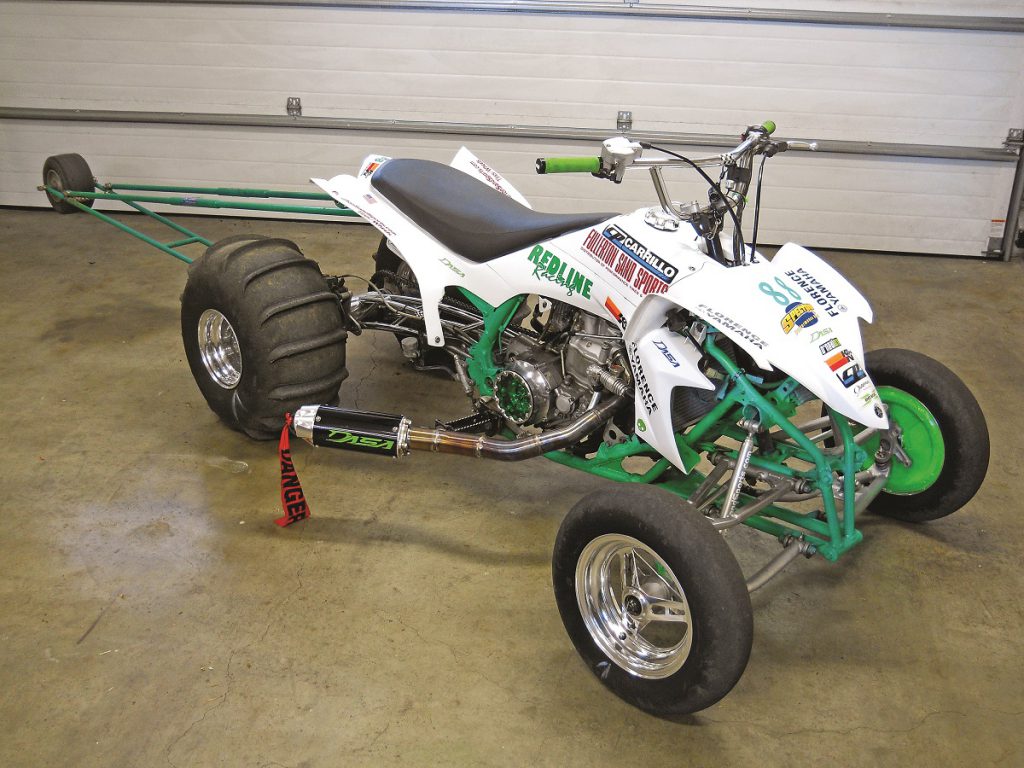
This two-time championship-winning, track-only “conversion” was built by Redline Racing in Oregon strictly for Index Racing and Bracket Racing. In addition to power-producing motor modifications, this bike has an “override,” also called a “cut,” transmission that doesn’t require using the clutch to shift. The colored chalk arrows on the tires are for quick location of valve stems to check tire pressures during the heat of racing. 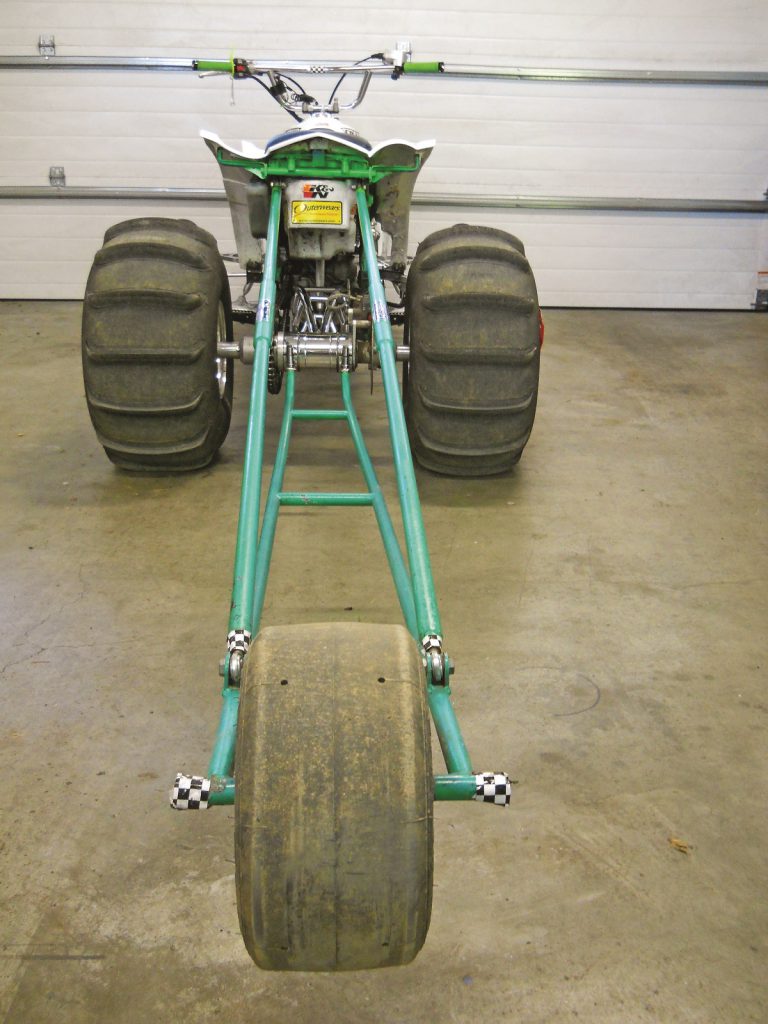
Most racers prefer a sturdy kart-racing tire with axle bearings at the business end of their wheelie bar. Others use plastic or carbon fiber wheels. There is a difference in “feel” when these wheels make contact with the track surface and go to work, so you may want to experiment with several different wheelie wheels. 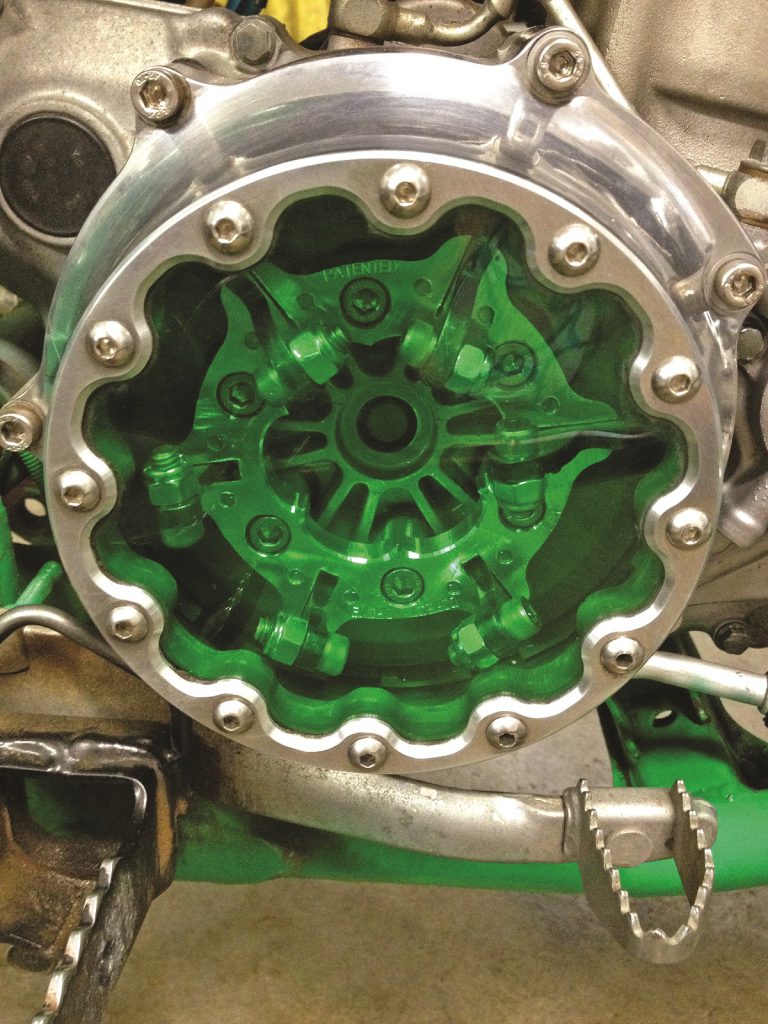
A lock-out clutch, like this one made by Direct Drive CNC, eliminates any possibility of clutch slippage and puts all the power to the rear paddle tires for blasting down the track. 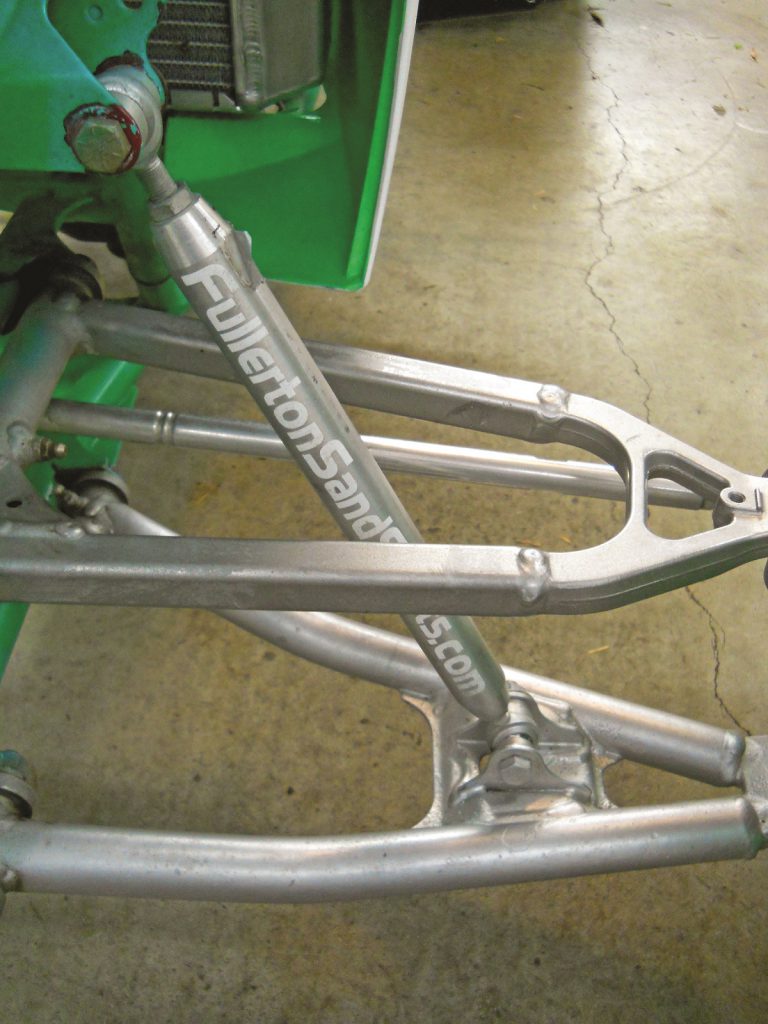
Adjustable aluminum struts like this one flatten out your ATV’s suspension, lowering the center of gravity, which provides a safer, faster trip down the track than shock absorbers do.
LOOSE ENDS
The bigger the build, the less reliable the motor, so be prepared. When you start racing, you may want to switch to a premium, race-quality 10w-50 or 15w-50 oil that’s wet-clutch compatible if your machine runs a wet clutch. (I use 15w-50 Spectro Platinum 4 Full Synthetic motorcycle oil with a K&N oil filter.) Change your oil and filters, and do a complete inspection of your race machine after every race weekend. Winning starts way before you get on the drag racetrack.
